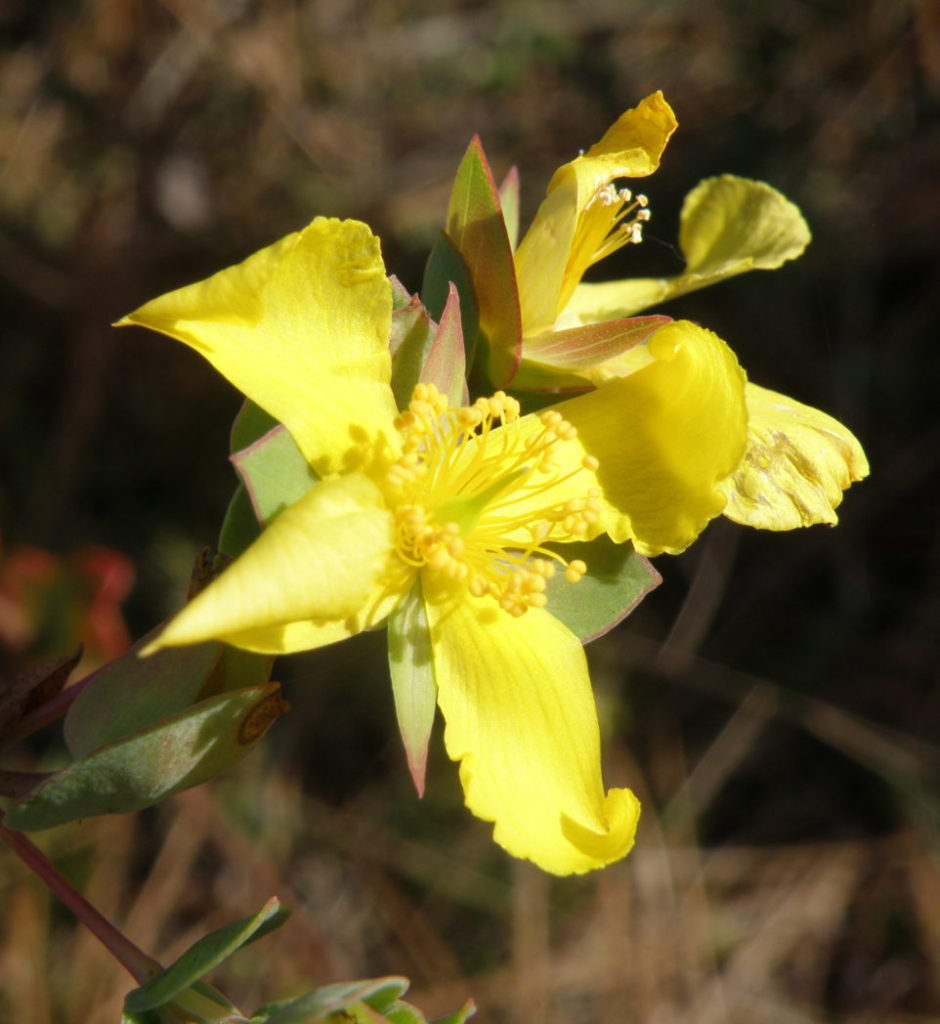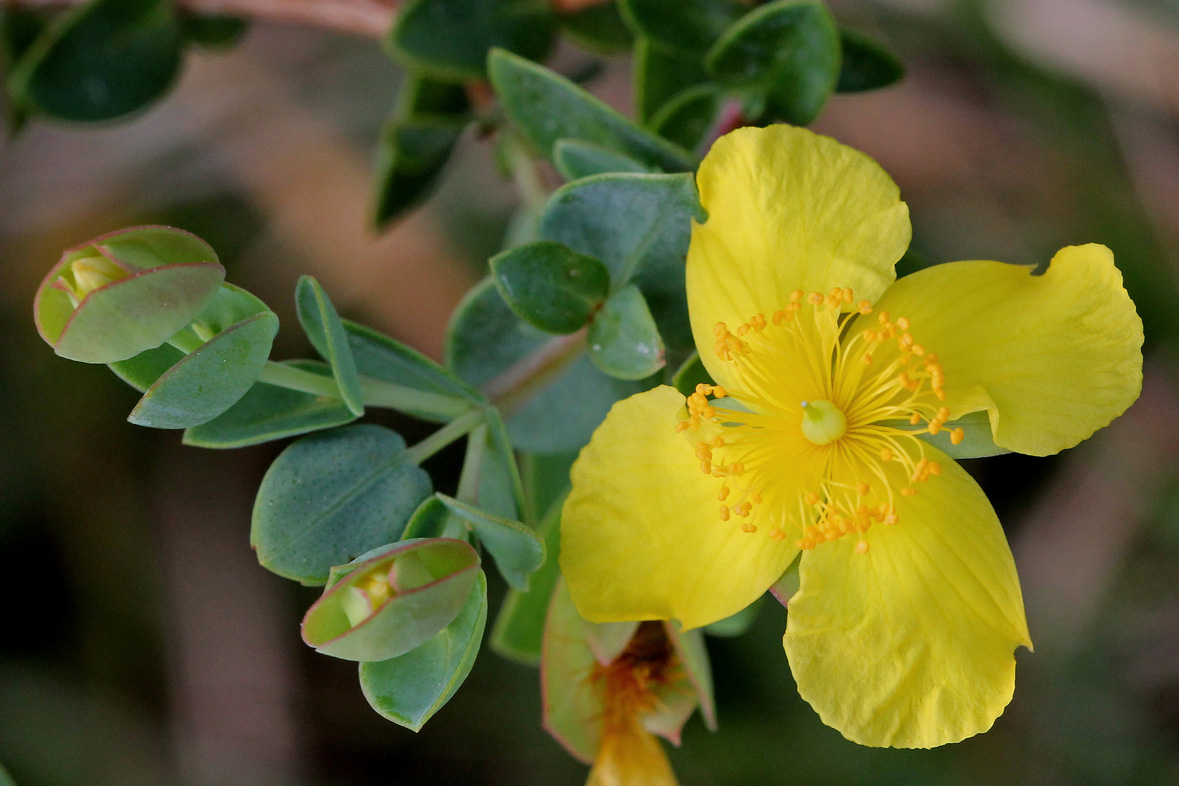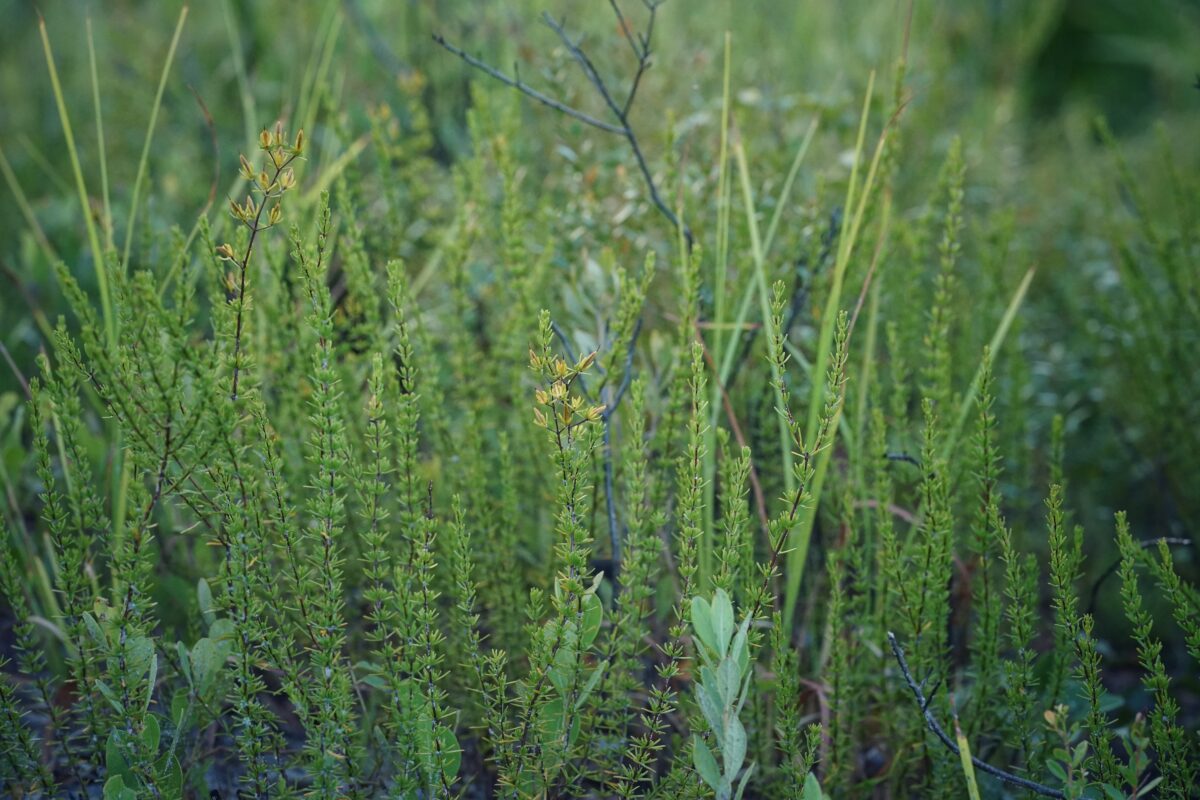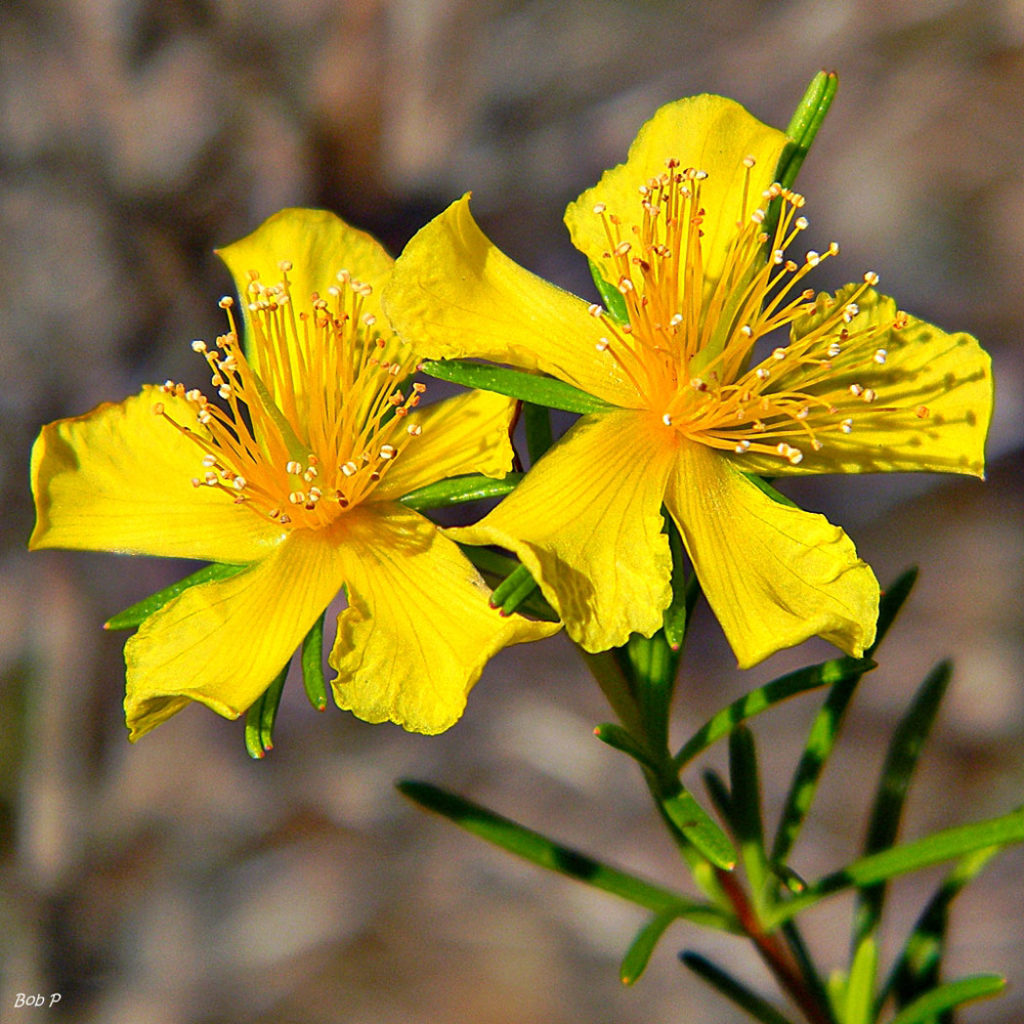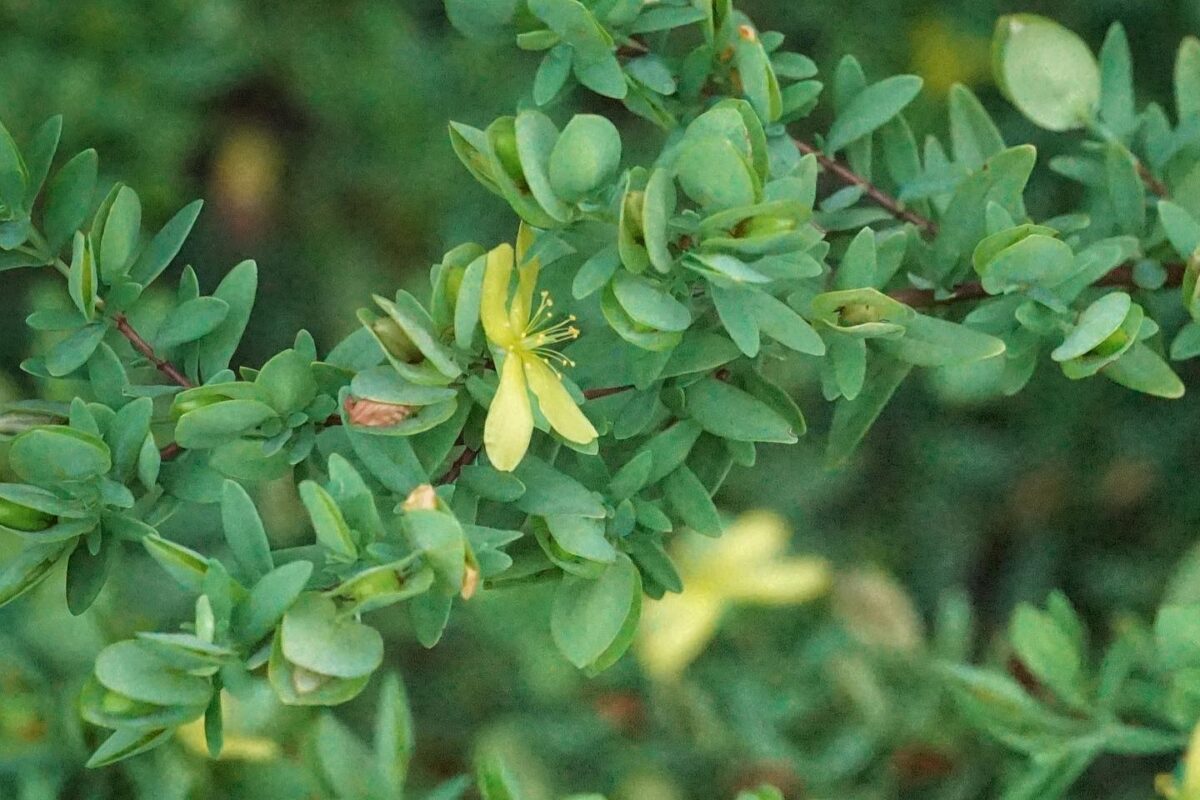Four-petal St. John’s wort
Pictured above: Four-petal St. John’s wort (Hypericum tetrapetalum) by Stacey Matrazzo. Click on terms for botanical definitions. View post as a PDF.
Four-petal St. John’s wort (Hypericum tetrapetalum) is an evergreen perennial shrub. Its blooms are bright lemon-yellow with four petals and four sepals. Leaves are ovate– to cordate-shaped, oppositely arranged and have entire margins. They clasp the stem. Leaves tend to be bluish-green, but may also be yellowish-green or reddish. Stems are glabrous and woody at the base.
Four-petal St. John’s wort can bloom throughout the year, but late spring is usually its best bloom time. It occurs naturally in moist flatwoods, sandhills and ruderal areas. It is considered a near-endemic species as it occurs only in Florida and limited parts of southern Georgia. It is attractive to bees.
Some taxonomists place the Hypericum genus in the Clusiaceae family, of which they consider Hypericaceae to be a subfamily (Hypericoideae). The species epithet tetrapetalum is from the Greek tetra or “four” and petalon meaning “petal or leaf.” It, like the common name, alludes to the flower’s four petals.
Family: Hypericaceae (St. John’s wort family)
Native range: Nearly throughout
To see where natural populations of Four-petal St. John’s wort have been vouchered, visit florida.plantatlas.usf.edu.
Lifespan: Perennial
Soil: Moist organic soils
Exposure: Full sun to minimal shade
Growth habit: 2–3’ tall; may also be prostrate or spreading
Propagation: Seed
Florida regions of landscape suitability: North, Central, South
Garden tips: Once established, four-petal St. Johns wort is easy to maintain in a landscape setting. It does best in moist soil and full sun, but can handle drier soils in partial shade. It does not do as well in drought conditions.
Caution: The St. John’s wort that is promoted as a supplement for use in treating depression is a non-native species. According to Dan Austin in his book, Florida Ethnobotany, using native St. John’s wort can lead to dermatitis or photosensitization due to a hypericin compound found in the plants.
Four-petal St. John’s wort plants are occasionally available at nurseries that specialize in native plants. Visit PlantRealFlorida.org to find a native nursery in your area.
Learn more about Four-petal St. John’s wort from the Florida Native Plant Society and the Institute for Regional Conservation.
For information on other Hypericum species, see these resources:

